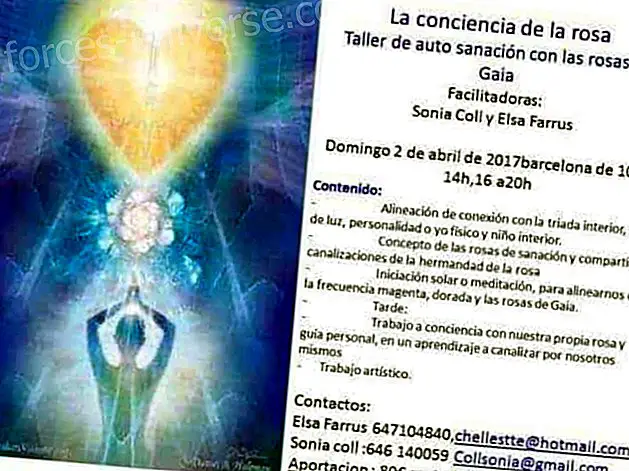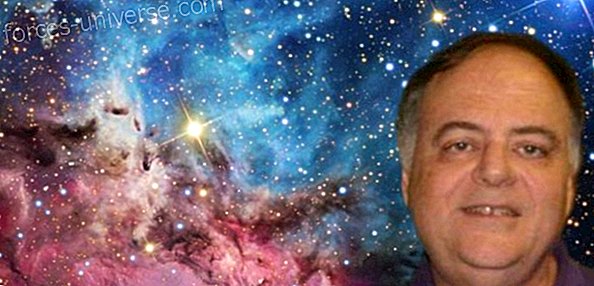
Transpersonal psychology is a psychological current that arises in the 60s, as an alternative to unify and integrate the knowledge of traditional Western psychologies with the wisdom of the great masters of the East, without excluding the psychological currents known until then as behaviorism, psychoanalysis and humanistic psychology, therapeutic models whose main objective was the adaptation of the individual to their environment, and did not admit the possibility of a higher psychological development.
However, humanistic psychologists addressed the dimensions of the human and the health-related through a more complete look of man, since they focused on personal development and human potential, and were interested in those possibilities that were more beyond self-realization, where the individual transcends the limits of identity and experience, and this is how a transition is made, a preparation for a fourth psychology, transpersonal, transhuman, focused on the cosmos, rather than on needs and interests humans.

Transpersonal psychology is, then, a therapeutic approach that aims for the human being to reach optimal levels of well-being and psychological health, giving importance to changes in states of consciousness, beyond the limits of ego and personality. It connects the psychological with the spiritual, in the search for self-realization and self-transcendence of man.
"The term transpersonal refers to the experiences, processes and events in which the limited sense of our identity is transcended, and a feeling of connection with something bigger, with a more meaningful reality, is experienced." It has to do with spirituality, with the path of personal transformation that appears when we try to answer the first question, who am I?
To the extent that we go deeper into the answer to this question, who I am, there is a transformation inside us that is driven by a mystery that we try to approach, and in which we find the mystery of consciousness, with The mystery of life
But this inner journey to the experience of this mystery is a long journey, full of paradoxes, tests, challenges, traps. A journey that has as its ultimate destination ourselves, because we don't have to get anywhere, just a deep understanding of who we are and who we are. A path always in concentric spiral circles towards a more recondite reality of our nature and therefore, of the nature of the reality in which we live. The spiritual path is a path of transformation and, therefore, a path of continuous change .
The new transpersonal psychology that emerges is specifically interested in scientific and empirical study as well as in a responsible application of the relevant discoveries on the ultimate values, unitive consciousness, ecstasy, mystical experiences, self-realization, the ultimate meaning, the transcendence of the self, the spirit, unity, cosmic consciousness, synergy between individuals and species, happiness, the sacred, transcendent phenomena, extrasensory perception, among others. Also, out-of-body experiences, near-death experiences, memories of past lives, altered, expanded or non-ordinary states of consciousness, love, compassion, fusion with others, channeling, voice or inner guidance, creative process, enlightenment, synchronicity, psychic abilities, etc .; and focused not only on the personal development that we have been presented as easy, fun, entertaining, always forward, and emphasized by a "positive thinking", but keeping in mind the "shadow" of our human condition.
There is a significant difference between being transported or transformed by these experiences. All the previous experiences can take us for a brief period of time to another state of consciousness, but if they do not produce an internal change, what then? Would there really be any difference between these experiences and the experiences in an amusement park?
The general values of the society in which we live tend to emphasize consumption, from the material to the spiritual; to deny our shadow and always show happiness as something to achieve through having or belonging, not as a result of personal transformation.
Transpersonal experiences can be the object of spiritual consumption, as a means to satisfy an ego and extend the spiritual curriculum, the curriculum of seminars, courses, workshops, workshops, knowledge, knowledge. Alternative therapies, and thus increase the illusion of personal power. The need for immediate satisfaction, the superficiality and the denial of the shadow, cause these experiences to remain in a mere artificial fire without causing an inner transformation. A transformation is not always pleasant, since most of the important transformations occur through internal crises that threaten the stable psychological structures, and resistance to that change is always present. .

A spiritual path must go hand in hand with a psychological work, a work of self-knowledge, self-observation, self-exploration, of making aware of the imbalance between our mental and emotional structures and our responses in the day by day in the face of life's situations. A way to make aware the deficiencies in our own psychological structures that diminish our freedom in the choices and the decisions we make. We must pay attention to the symptomatology that the body presents to us, since it reveals the inconsistencies between mind-emotion-action. Learning to listen to body language is the beginning of one's own healing (inner transformation), physical, mental and emotional. And if physics is not given, because it is already irreversible, the important thing is the healing of “the wounds of the Soul” . However, considering the body as the “Temple” in which we reside implies that it is the instrument of expression of our conscience, and therefore, it must be taken care of with adequate food, adequate rest and sleep, exercise…; and integrating all these aspects we achieve that the spiritual development is based on firm ground.
Relevant authors in Transpersonal Psychology
William James:
Psychologist and student of religious experience. Not only is he known for being the most prominent disseminator of pragmatist philosophy but also for being the first American to recognize psychology as an independent discipline. He studied the free will and recognized the existence of a spiritual self, more internal, subjective and dynamic than the material or social self. He had his own mystical experiences, and was interested in the practical aspects of the religious experience and the way he acted in daily life. He became a defender of consciousness as an effective force in the biological evolution of species. Consciousness, he warned, obeys the laws of variation and selection. The spirit is also life, and it is necessary to surprise and follow it in this life.
Carl Gustav Jung:
Psychiatrist, psychologist and Swiss essayist, was a key figure in the initial stage of psychoanalysis; subsequently, founder of the school of analytical psychology, also called complex psychology and deep psychology. His studies on myths, dreams, symbolic systems - alchemy, tarot, astrology, I Ching - had valuable contributions: the idea of Collective Unconscious. Archetypes, perhaps Jung's most relevant and solid contribution in this field, as one of the main concepts of the Transpersonal.
Roberto Assagioli:
He was the first to use the term Transpersonal (1956) in the sense that it is currently accepted: he was the creator of Psychosynthesis, following the line marked by Jung, but expanding his concepts, since he distinguished the Higher Unconscious (or Transpersonal Self) from Collective Unconscious
He shared with Freud and Jung the birth of psychoanalysis and deep psychology at the beginning of this century in the group «Zurich Freud Society». The study of the processes of the unconscious left a deep impression, which he later developed in a variety of hypotheses that exceeded the limits of orthodox psychoanalysis.
He pioneered the Humanist Psychology Movement, along with Maslow, Rogers and Rollo May in the 1960s. The main idea was simple: rather than focusing on pathology to define the human being - as psychoanalysis did too often - or in the structural similarities between the animal and the human nervous system - as behaviorism suggests - the greatest emphasis was placed on the aspiration towards totality, on the human potential towards growth, the expansion of consciousness, health, love And the joy
Abraham Maslow:
Although he made no practical contribution to Transpersonal Psychology, his insistence cannot be overlooked, in the fact that "peak experiences" are the key to entering the transpersonal.
His concept of self-realization and fulfillment is very close to a state of unity of mystical characteristics. He founded the Journal of Transpersonal Psychology in 1968, thus launching the so-called "fourth force of Psychology."
He proposed the pyramid or hierarchy of human needs in which the basic idea is: only higher needs are met when lower needs have been met, that is, we all aspire to meet higher needs. The growth forces give rise to an upward movement in the hierarchy, while the regressive forces push the prepotent needs down in the hierarchy. Only unmet needs influence the behavior of all people, since the satisfied need does not generate any behavior.
Stanislav Grof:
One of the most prominent authors in the field of Transpersonal Psychotherapy. He began as a psychiatrist and psychoanalyst in 1956, investigating hallucinogens with LSD to find a way to approach and understand the mechanisms of schizophrenia. The result was totally unexpected, since they had nothing to do with schizophrenia (which implies isolation from the world) but achieved the opposite: greater openness to the world and greater relationship with internal problems. This led him, in the field of transpersonal experiences, to one of his most important discoveries that was the Perinatal Matrices, in which he describes the transcendence of the framework of reality, space and time, which gives us a vision invaluable of the different stages of the birth process, and the traces that it prints on the psyche of human beings, as well as psychopathology, highlighting the therapeutic potential of the religious and spiritual dimension. Later he developed the technique of Holotropic Breathing, which allows to achieve those same experiences, without the inconvenience of the use of psychotropics.
“Holotropic breathing allows access to all levels of human experiences including unfinished themes of our biography, perinatal memories (related to the birth process) and the transpersonal domain, in which the ordinary limits of the body and ego are transcended . Activate the unconscious and mobilize blocked energies through what Grof calls our "internal radar." They are experiences of immense transformative and evolutionary potential. ” Breathe
Ken Wilber:
A prolific author, he is considered the main student of consciousness, transpersonal psychology and the integral approach.
He has developed an "integral theory of Everything" that encompasses the truths of all the great psychological, scientific, philosophical and spiritual traditions that constitute "perennial wisdom."
In 1977, in an effort to reconcile the psychological with the spiritual, this psychologist emerges, author of a series of books on mysticism, psychology, historical development of the world, religion and physics. It presents in a very illuminating way its maps of the different levels of consciousness and its evolution, from a transpersonal perspective, as well as the psychotherapies that are more convenient to apply at each level. He is considered one of the living writers in the world on issues related to Consciousness and Transpersonal Psychology. Graduate in chemistry and biology. He has extensive knowledge in psychotherapy, philosophy and religion. Wilber believes that our perception is just an insignificant island surrounded by a wide and unsuspected sea of consciousness.
From 1969 and around the Journal of Transpersonal Psychology, the Association for Transpersonal Psychology is formed in the United States, which brings together scholars and practitioners of the subject such as: A. Maslow, S. Grof, K. Wilber, V. Frankl, C. Tart, F. Vaughan, G. Allport, and many more.
Sources:
https://www.caminosalser.com/transpersonal/
http://www.holotropica.org/index.php/es/respiracion-holotropica/psicologia-transpersonal
http://www.planetaholistico.com.ar/PsicologiaTranspersonal.htm
http://www.trans-personal.com/razonser.htm
Author: Margarita Londo o
GHB Editor
Transpersonal Psychology






